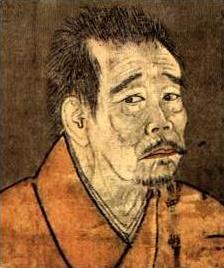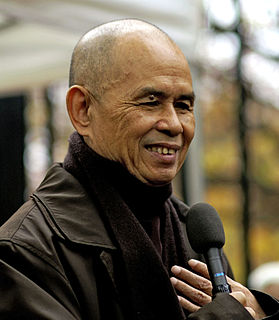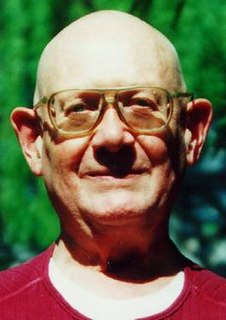 W
WThích Thiên-Ân (釋天恩) was a teacher and Buddhist monk of Vietnamese Thiền (Zen) Buddhism and was active in the United States from 1966 to 1980. He was ordained at Chua Chau Lam in Hue, Vietnam.
 W
WBaisan Monpon was a Sōtō Zen monk. He received dharma transmission from Gasan Jōseki and is considered a patriarch by the Sōtō school. He was the author of the Zenkai-ron.
 W
WBaisao (1675–1763) was a Japanese Buddhist monk of the Ōbaku school of Zen Buddhism, who became famous for traveling around Kyoto selling tea. The veneration of Baisao during and after his lifetime helped to popularize sencha tea and led to the creation of the sencha tea ceremony.
 W
WCarlo Zendo Tetsugen Serra is an Italian missionary Soto Zen master, in the lineage of Harada Daiun Sogaku . He founded his sangha, of the "Sangha della foresta di Bambü" and the monasteries Ensoji il Cerchio in Milan, and Sanbo-ji Tempio dei Tre Gioielli in Berceto. He also founded the "Scuola Zen di Shiatsu", that aims to use the art of shiatsu treatments as a zen practice. He is one of the buddhist religious authorities in Europe signator of the interreligious Italian "Manifesto della pace".
 W
WTaisen Deshimaru was a Japanese Sōtō Zen Buddhist teacher, who founded the Association Zen Internationale.
 W
WEgaku or Hui'E was a well-connected 9th century Japanese scholar-monk who made frequent trips to Tang China for pilgrimage and bringing back Buddhist teachings to Japan. Egaku had a huge impact on the religious and cultural history of China and Japan. In Japan, he is famous for bringing the first Rinzai Zen monk Gikū and the works of the Chinese poet Bai Juyi to Japan. In China, he is renowned for his role in establishing a developed pilgrimage site in Putuoshan, one of the four major Buddhist pilgrimage sites in China.
 W
WHakuin Ekaku was one of the most influential figures in Japanese Zen Buddhism. He is regarded as the reviver of the Rinzai school from a moribund period of stagnation, refocusing it on its traditionally rigorous training methods integrating meditation and koan practice.
 W
WTōrei Enji (東嶺円慈) was an eminent Japanese Zen Buddhist monk, teacher, author, painter and calligrapher. He was the chief disciple and Dharma heir of famed Japanese Rinzai master Hakuin Ekaku (1685-1786) and was a major figure in the revival of the Rinzai school in eighteenth century Japan. He is also known as the author of an influential text on Zen practice called "The Undying Lamp of Zen", which is his magnum opus and presents the comprehensive system of Rinzai Zen as it existed at the time of Hakuin.
 W
WKeian Genju was a Japanese Buddhist monk who studied classics under Ishō at Nanzen-ji.
 W
WGikū or Yikong was an early Heian period Buddhist monk from Tang China. He is Japan's first Buddhist monk who exclusively taught Zen.
 W
WEmperor Hanazono was the 95th emperor of Japan, according to the traditional order of succession. His reign spanned the years from 1308 through 1318.
 W
WIkkyū was an eccentric, iconoclastic Japanese Zen Buddhist monk and poet. He had a great impact on the infusion of Japanese art and literature with Zen attitudes and ideals, as well as on Zen itself, often breaking religious taboos with his stance against celibacy.
 W
WJìyuán, better known to Buddhist scholars by his Japanese name Jakuen, was a Chinese Zen Buddhist monk and a disciple of Rujing. Most of his life is known to us only through medieval hagiography, legends, and sectarian works. It is generally agreed, though, that during his time at Tiāntóng Mountain he befriended Dōgen who was also studying under Rujing. After Rujing's death in 1228, Jakuen immigrated to Japan in order to join his friend's emerging Sōtō school, but did not receive dharma transmission from Dōgen directly, rather his disciple Koun Ejō.
 W
WJakushitsu Genkō was a Japanese Rinzai master, poet, flute player, and first abbot of Eigen-ji. His poetry is considered to be among the finest of Zen poetry. He traveled to China and studied Ch'an with masters of the Linji school from 1320 to 1326, then returned to Japan and lived for many years as a hermit. It was only toward the end of his life that he decided to teach Zen to others.
 W
WKangan Giin was a disciple of Dōgen and the founder of the Higo school of Sōtō Zen Buddhism. It has been claimed that his father was Emperor Go-Toba or Emperor Juntoku. He did much evangelization work in Kyūshū, where he founded Daiji-ji (大慈寺) in Kumamoto. Before practicing with Dōgen, Giin started his Buddhist path as a Tendai monk. He later abandoned that school and became a member of Daruma School under Kakuzen Ekan. Along with his fellow students Tettsū Gikai and Gien, Giin became a student of Dōgen when Giin's teacher Ekan himself became a student of Dōgen. Dōgen died without giving dharma transmission to Giin, but he received it later from Dōgen's primary disciple, Koun Ejō.
 W
WMujū Dōkyō, birth name Ichien Dōkyō, was a Buddhist monk of the Japanese Kamakura period. He is superficially considered a Rinzai monk by some due to his compilation of the Shasekishū and similar books of koans, but there is good evidence that he was also an eager student of the Tendai, Pure Land, and Hosso sects, and he is occasionally placed in the Shingon and Ritsu sects as well.
 W
WMusō Soseki was a Rinzai Zen Buddhist monk and teacher, and a calligraphist, poet and garden designer. The most famous monk of his time, he is also known as Musō Kokushi (夢窓国師), an honorific conferred on him by Emperor Go-Daigo. His mother was the daughter of Hōjō Masamura (1264-1268), seventh Shikken (regent) of the Kamakura shogunate.
 W
WDainichibō Nōnin (大日房能忍) was a Japanese Buddhist monk who started the first Zen school in Japan.
 W
WVen. Pomnyun Sunim is a Korean Buddhist monk and a Seon master renowned as an author, a Dharma teacher, and for his humanitarian work. He is also a social activist, leading various movements, such as ecological awareness campaigns and the promotion of human rights, as well as working toward world peace and the eradication of famine, disease, and illiteracy. In recognition of his efforts and achievements, Pomnyun Sunim was a recipient of the Ramon Magsaysay Award for Peace and International Understanding in September 2002.
 W
WKodo Sawaki was a prominent Japanese Sōtō Zen teacher of the 20th century. He is considered to be one of the most significant Zen priests of his time for bringing Zen practice into the lives of laypeople and popularizing the ancient tradition of sewing the kesa. Peter Sloterdijk has called him "one of the most striking Zen masters of recent times."
 W
WSokei-an Shigetsu Sasaki, born Yeita Sasaki, was a Japanese Rinzai monk who founded the Buddhist Society of America in New York City in 1930. Influential in the growth of Zen Buddhism in the United States, Sokei-an was one of the first Japanese masters to live and teach in America. In 1944 he married American Ruth Fuller Everett. He died in May 1945 without leaving behind a Dharma heir. One of his better known students was Alan Watts, who studied under him briefly. Watts was a student of Sokei-an in the late 1930s.
 W
WDaichi Sokei (大智祖継) (1290-1366) was a Japanese Sōtō Zen monk famous for his Buddhist poetry who lived during the late Kamakura period and early Muromachi period. According to Steven Heine, a Buddhist studies professor, "Daichi is unique in being considered one of the great medieval Zen poets during an era when Rinzai monks, who were mainly located in Kyoto or Kamakura, clearly dominated the composition of verse." He was originally a disciple of one of Eihei Dōgen's students Kangan Giin, but after Giin's death he practiced under Keizan Jōkin for seven years. He also traveled to China in 1314 and remained there until 1324; his stay out of Japan was unintentionally extended when he was shipwrecked in Korea on his return journey, preventing him from actually returning until 1325. Upon returning to Japan, he received dharma transmission under Keizan's disciple Meihō Sotetsu. He is considered to be part of the Wanshi-ha poetry movement based on the writing style of the Sōtō monk-poet Hongzhi Zhengjue. While in China, Daichi studied under the poet Gulin Qingmao.
 W
WDaisetz Teitaro Suzuki , self-rendered in 1894 as "Daisetz", Japanese religious scholar, essayist, philosopher, translator, and writer. He practiced and studied Buddhism, however he didn't become a monk and remained secular as "Koji" (居士). He was a scholar and author of books and essays on Buddhism, Zen that were instrumental in spreading interest in Zen to the West. Suzuki was also a prolific translator of Chinese, Japanese, and Sanskrit literature. Suzuki spent several lengthy stretches teaching or lecturing at Western universities, and devoted many years to a professorship at Ōtani University, a Japanese Buddhist school.
 W
WShunryu Suzuki was a Sōtō Zen monk and teacher who helped popularize Zen Buddhism in the United States, and is renowned for founding the first Zen Buddhist monastery outside Asia. Suzuki founded San Francisco Zen Center which, along with its affiliate temples, comprises one of the most influential Zen organizations in the United States. A book of his teachings, Zen Mind, Beginner's Mind, is one of the most popular books on Zen and Buddhism in the West.
 W
WJochū Tengin was a Sōtō Zen monk. He received dharma transmission from Baisan Monpon and is considered a patriarch by the Sōtō school.
 W
WTettsū Gikai (徹通義介) is the third spiritual leader of the Sōtō Zen school of Buddhism in Japan. He began his Buddhist life as a student of the Darumashū's Ekan, but later both became students of Eihei Dōgen's newly established Sōtō school. Gikai received dharma transmission from Koun Ejō, Dōgen's successor, and later became the third abbot of the school's head temple, Eihei-ji. Shortly thereafter, he became embroiled in a leadership crisis known as the sandai sōron. Other monks contended that other students, namely Jakuen, Gien or Giin, had stronger claims to the abbacy. The controversy remained unresolved at the time of his death. His abbacy was unpopular with some monks because he introduced innovative practices aimed at making Sōtō more palatable with the Japanese laity, which some claimed Dōgen would have frowned upon. However, he also had many followers, and eventually his innovations became the standard form of Sōtō Zen. His leadership marked the first geographical expansion of the Sōtō school when he moved with his followers to Kaga Province. Most notably, his disciple Keizan Jōkin became the second most famous figure in the school's history after Dōgen by generating mass appeal for Sōtō Zen and ultimately spreading the teachings to all corners of Japan.
 W
WThích Nhất Hạnh was a Vietnamese Thiền Buddhist monk, peace activist, prolific author, poet, teacher, and founder of the Plum Village Tradition, historically recognized as the main inspiration for engaged Buddhism. Known as the "father of mindfulness", Nhất Hạnh was a major influence on Western practices of Buddhism.
 W
WVen. Thich Nhat Tu or Thích Nhật Từ in Vietnamese is a Vietnamese Buddhist reformer, an author, a poet, a psychological consultant, and an active social activist in Vietnam. He is committed to propagate Buddha's teachings through education, cultural activities and charitable programs in order to benefit the individuals and the society at large.
 W
WClaude Anshin Thomas is an American Zen Buddhist monk and Vietnam War veteran. He is an international speaker, teacher and writer, and an advocate of non-violence. Thomas was brought to Buddhism by Vietnamese Zen Buddhist teacher Thich Nhat Hanh, and was ordained in 1995 by Tetsugen Bernard Glassman of the Zen Peacemaker Order. Thomas teaches Buddhist meditation practice and dharma to the public through social projects, talks, and retreats. Since 1994, Thomas has walked 19,000 miles (31,000 km) on peace pilgrimages throughout Europe, Asia, the Middle East, and the United States. While walking, Thomas carries no money, and begs for food and shelter in the mendicant monk tradition. He is the author of At Hell's Gate: A Soldier's Journey from War to Peace (2004) and founder of the Zaltho Foundation, a nonprofit organization dedicated to ending violence.
 W
WBrad Warner is an American Sōtō Zen monk, author, blogger, documentarian and punk rock bass guitarist.
 W
WPhilip Glenn Whalen was an American poet, Zen Buddhist, and a key figure in the San Francisco Renaissance and close to the Beat generation.
 W
WRyoun Yamada, aka Yamada Ryoun or Yamada Masamichi, the son of the late Yamada Koun, is the current Zen master of San'un Zendo in Kamakura, Japan and the Abbot of the Sanbo Zen school of Zen Buddhism. Sanbo Zen is a lay organization of Zen, so Yamada also worked at Mitsubishi Bank and Mitsubishi Securities. Currently he heads the Itoki Corporation. As of the late 1990s, Yamada was returning to Japan only a few times each year.